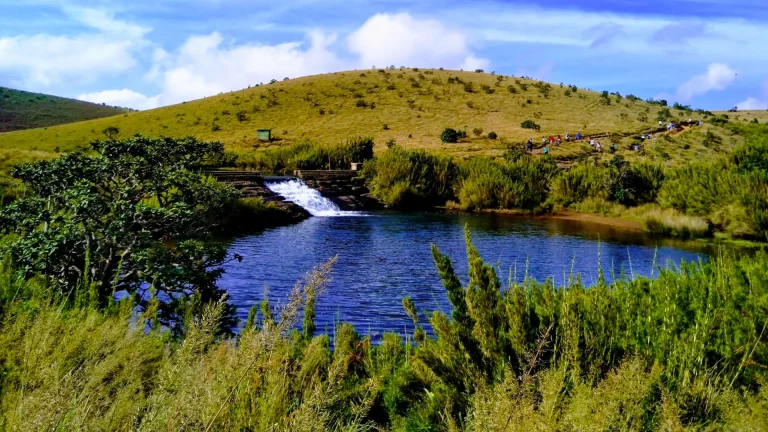All Provinces
Discovering Galle Dutch Fort: A Timeless Journey Through History and Culture
Nestled on the southern coast of Sri Lanka, Galle Dutch Fort is a stunning historical landmark that has withstood the test of time. This UNESCO World Heritage site is an extraordinary blend of European architecture and South Asian traditions, reflecting centuries of cultural exchange. For travelers, Galle Fort offers more than just history—it’s an experience that immerses you in a blend of vibrant culture, scenic beauty, and colonial charm.
A Glimpse into History
Galle Fort, built initially by the Portuguese in 1588, was extensively fortified by the Dutch during the 17th century. Its primary purpose was to protect Galle, then an important trading hub, from foreign invasions. The fort has passed through the hands of the Portuguese, Dutch, and British, each leaving behind unique architectural and cultural footprints.
Walking through the fort’s narrow streets feels like stepping back in time. The colonial architecture, cobblestone pathways, and ancient churches evoke a sense of nostalgia, as if you’re wandering through a European town lost in the tropics. The fort’s walls, which have weathered centuries of storms and battles, still stand tall, offering panoramic views of the Indian Ocean.

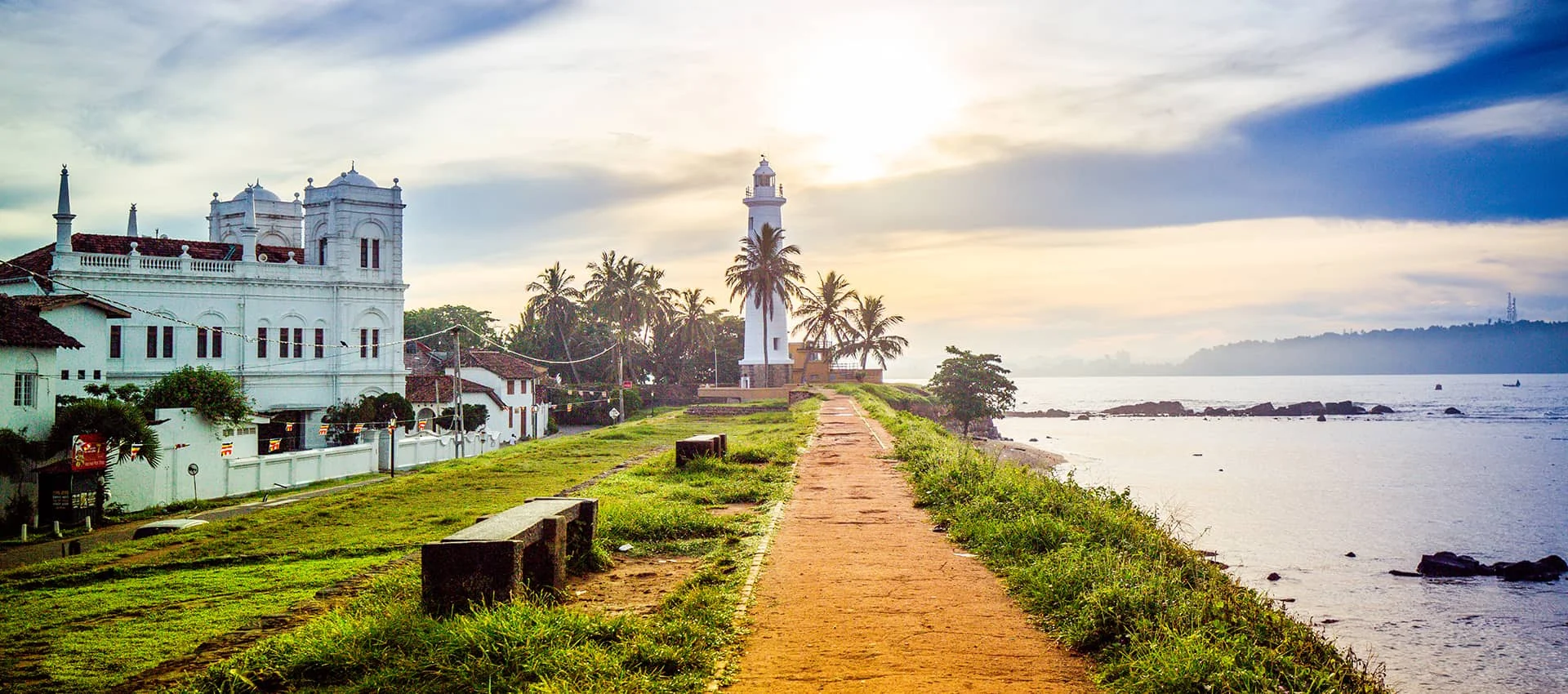
Exploring the Fort
The fort is not just a relic of the past; it’s a living, breathing neighborhood where locals and tourists coexist. The best way to experience Galle Fort is on foot. As you stroll along its cobblestone streets, you’ll encounter a mixture of quaint cafes, boutique hotels, and artisanal shops tucked inside colonial-era buildings. Galle’s fusion of cultures is evident everywhere, from the architecture to the cuisine.
Must-See Attractions
- The Ramparts One of the fort’s most iconic features is its towering ramparts, which encircle the entire fort. Walking along the ramparts is a must-do activity, especially around sunset when the golden hues reflect off the ocean. The sea breeze, combined with the stunning views of the coastline and old lighthouse, creates a serene and unforgettable experience.
- Galle Lighthouse Standing tall at the southeastern corner of the fort is the Galle Lighthouse, one of the oldest in Sri Lanka. The lighthouse, with its stark white structure contrasting against the blue sky and sea, is a picturesque spot for photographs. It’s also an excellent place to sit and take in the panoramic views of the ocean and the surrounding fort.
- Dutch Reformed Church A symbol of the fort’s Dutch heritage, this church was built in 1755 and still retains its original gravestones, carved wooden pews, and stained-glass windows. The church’s interior exudes an air of calm and serenity, offering a glimpse into the past religious practices of the Dutch colonizers.
- National Maritime Museum Located inside a 17th-century warehouse, this museum offers fascinating insights into Sri Lanka’s maritime history, including shipwrecks, trade routes, and colonial naval expeditions. The exhibits range from ancient navigational equipment to artefacts recovered from shipwrecks that occurred in the waters surrounding Galle.
- Old Dutch Hospital This well-preserved building has been transformed into a shopping and dining complex, offering a modern twist to the fort’s historical ambiance. Enjoy a meal at one of the open-air restaurants while gazing at the Indian Ocean, or shop for local crafts and souvenirs.
A Taste of Galle
Galle Fort’s culinary scene is a testament to its diverse history. From Sri Lankan rice and curry to Dutch-influenced pastries, the food here offers a fusion of flavors. Local cafes, such as Peddlar’s Inn Café, serve freshly brewed Ceylon tea and European-style breakfast spreads, while restaurants like The Fort Printers offer gourmet seafood dishes. The tropical fruits, fresh seafood, and Sri Lankan spices create an explosion of tastes that complement the fort’s vibrant atmosphere.
For those craving a sweet treat, don’t miss the chance to try Coconut Sambol with fresh roti or the famous Sri Lankan hoppers—a bowl-shaped pancake made with fermented rice flour, often served with curry or sweetened with coconut milk and jaggery.


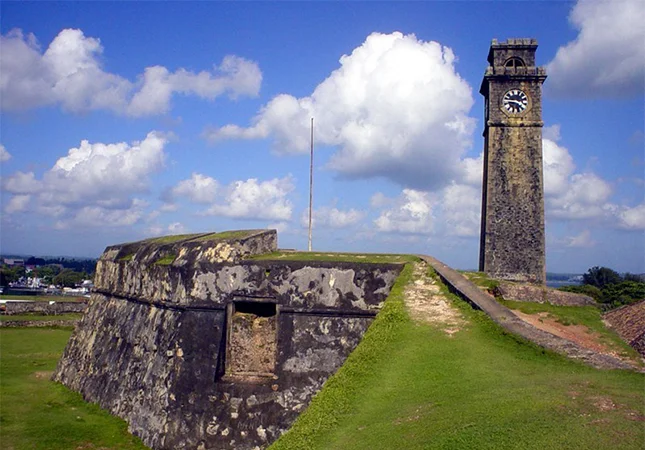


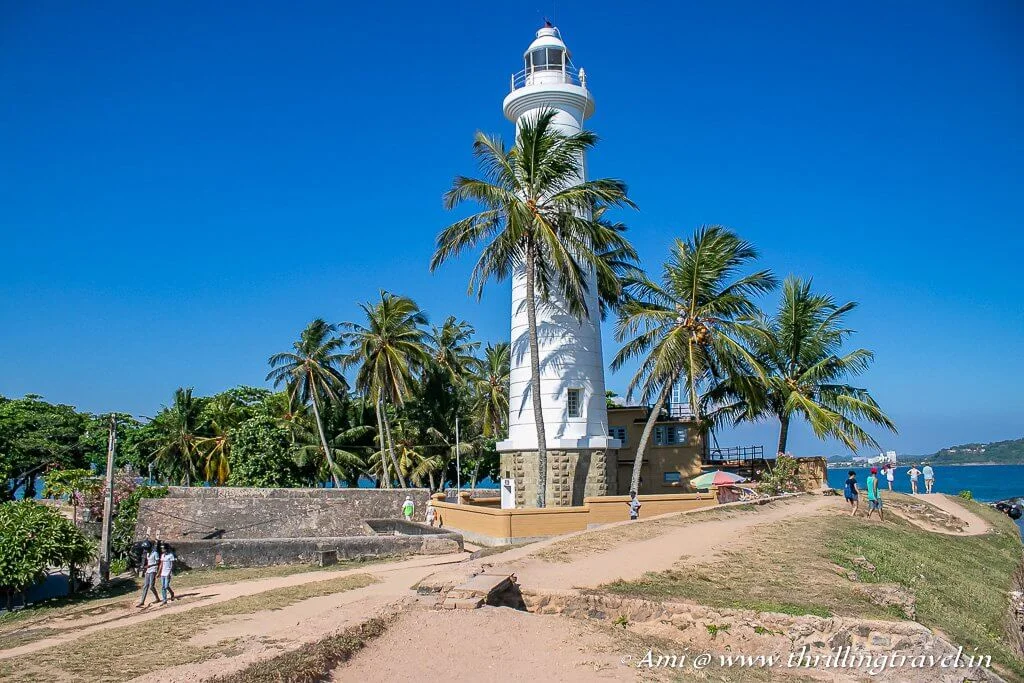
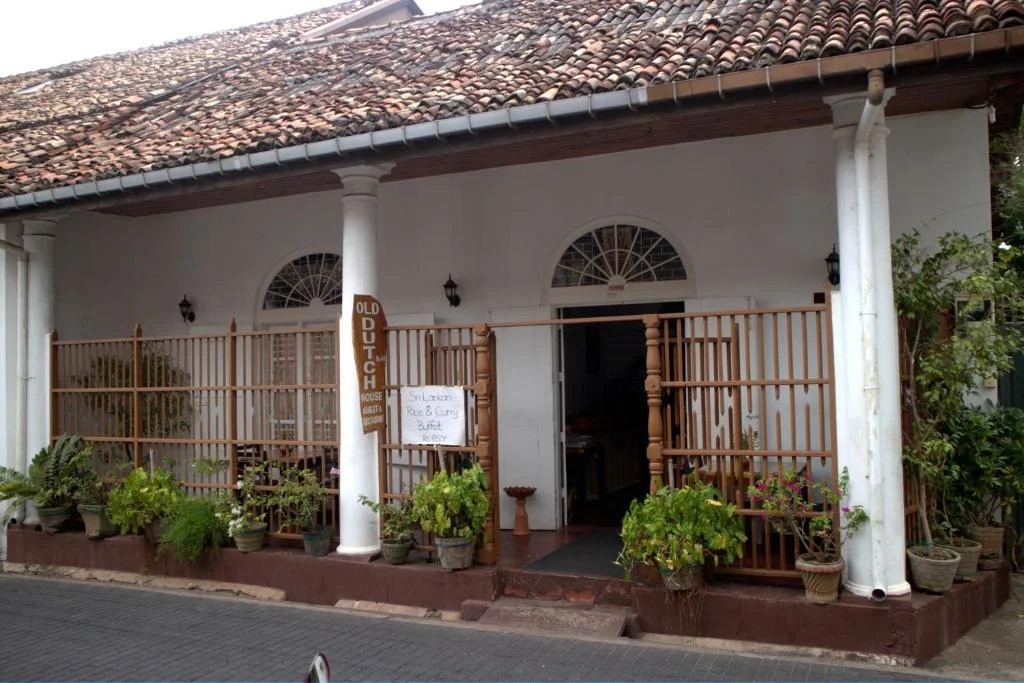



Shopping and Souvenirs
Galle Fort is home to a variety of charming boutiques, perfect for picking up unique souvenirs. You’ll find local crafts, handmade jewelry, antiques, and art that reflect Sri Lanka’s cultural diversity. Barefoot is a well-known store that offers vibrant handwoven textiles, perfect for travelers looking to take home a piece of Sri Lankan craftsmanship. Other popular stops include Stick No Bills, a gallery that specializes in vintage-style travel posters, and Exotic Roots, which offers contemporary art and jewelry.
Festivals and Events
Galle Fort also plays host to several cultural events throughout the year. The Galle Literary Festival, held annually, attracts renowned authors and literary enthusiasts from around the world. The fort becomes a hub of intellectual exchange, with book readings, panel discussions, and workshops taking place against the backdrop of its historical setting. If you’re lucky enough to visit during this time, it’s a unique way to experience Galle’s creative spirit.
Where to Stay
Galle Fort offers a variety of accommodation options, from luxury boutique hotels to budget-friendly guesthouses. Many of these hotels are housed in restored colonial buildings, offering guests a taste of history combined with modern comforts.
Amangalla, one of the most luxurious options, provides a lavish experience with its colonial charm, beautiful gardens, and spa facilities. If you’re looking for something more intimate, The Fort Printers offers stylish rooms in a converted 18th-century mansion. For budget-conscious travelers, there are plenty of charming guesthouses like Antic Guesthouse, where you can enjoy a comfortable stay without breaking the bank.
Practical Information
- Getting There: Galle Fort is easily accessible from Colombo by train, bus, or car. The scenic coastal train ride is highly recommended, offering stunning views of the Indian Ocean along the way. The journey takes about 2-3 hours by train, depending on the service.
- Best Time to Visit: The best time to visit Galle is between November and April, when the weather is warm and sunny, perfect for exploring the fort and enjoying the nearby beaches.
- Tips: Bring comfortable walking shoes, as the best way to explore the fort is on foot. Don’t forget to stay hydrated and wear sunscreen, especially if you’re walking along the ramparts during midday.
Conclusion
Galle Dutch Fort is a destination where history, culture, and natural beauty converge. Whether you’re a history buff, a foodie, or simply looking for a serene coastal escape, Galle offers something for everyone. The timeless charm of the fort, combined with the warmth of the local community, ensures that a visit to Galle is not just a trip, but a journey through time.
See More Tourist Places Click Here








